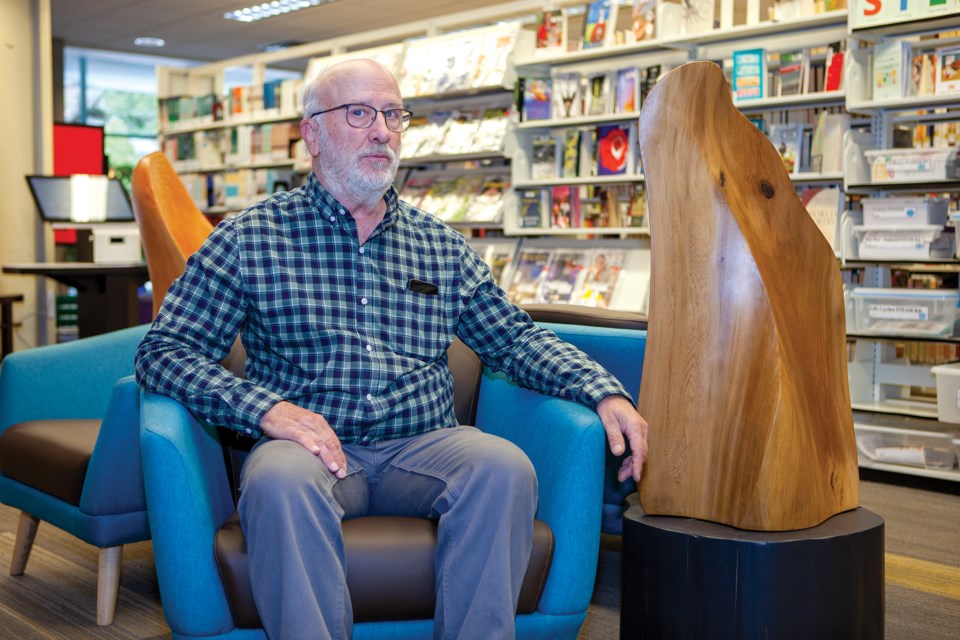Abstract sculptures by Gibsons-based carver David Evanson are the subject of a current exhibition in which hand-hewn cedar trunks reveal the essential nature of long-lived things.
Evanson’s undulous shapes in cedar and fir are on display at the Gibsons and District Public Library until the end of April.
The show follows the unveiling in 2022 of Evanson’s outdoor installation Breaching Whale as part of the Town of Gibsons public art path initiative.
Both Breaching Whale and the library exhibition embody Evanson’s signature style, which flows from admiration for his organic material.
“I have a reverence for wood and I find it exquisite,” said Evanson. “It’s at the absolute root of my inspiration and my motivation to carve, which I do by following the natural shapes. I sometimes only start with a line or a notion but I quickly let the natural grain and form and volume of the wood speak and inform me.”
At the library’s entrance, a monumental column of red cedar appears pillar-like when viewed at a distance. Careful study reveals Evanson’s subtle influence in shaping the original trunk, accentuating and softening ridges that echo its concentric rings.
In the library’s atrium, his assemblage of cedar sculptures takes on the mein of a sylvan garden frozen in the flush of growth. A blossom-shaped work of red cedar, perched on a dark-hued round, flaunts its crevasses and protuberances like beauty marks. A massive block of Douglas fir is carved into a petal-like form whose delicate curves amplify its wide-spaced grain, a venerable chronicle of endurance. On a shelf behind the circulation desk, fin-like forms in red and yellow cedar twist on their axes as they reach skyward.
Evanson began to cultivate his passion for woodcarving 17 years ago under the guidance of Robert Barrett, who himself was a pupil of Nisga’a artist Norman Tait. His fascination with Indigenous traditions grew under further instruction from Ts’msyen carver Terry Starr, whose output included a full-size bighouse constructed for the Canadian Museum of History in Gatineau, Quebec.
“I’ve always had a strong affinity with First Nations,” Evanson said. “It was a logical fit in that regard. Robert didn’t think I was going to commute once a week [for classes]. He didn’t think I had the discipline to do that. But I did it for a few years there, once a week to West Vancouver. It was my pleasure, actually.”
After six years, Evanson began a period of travel and experimentation, focusing on carving practical objects and anatomical studies — including his own hand and left arm. Three years ago, he adopted the freeform approach that now distinguishes his work. “I think I found my way to the style that suits me,” he said.
Raw logs are gathered from beaches and industrial yards, rescuing material that would otherwise end up in hog fuel chippers. No live wood is used. Evanson dries the pieces for at least a year before carving, seasoning his treasures like a sommelier.
“My way of doing it,” said Evanson, “is to celebrate the wood and to use it to its highest purpose.”
Abstracts by David Evanson remain on display at the Gibsons and District Public Library until April 30.



